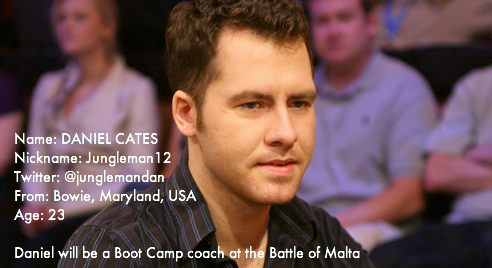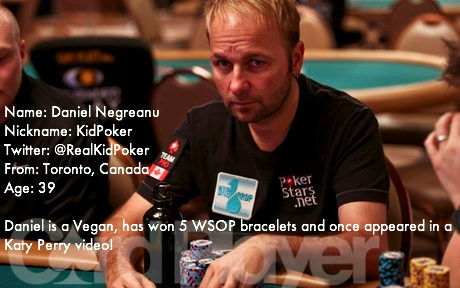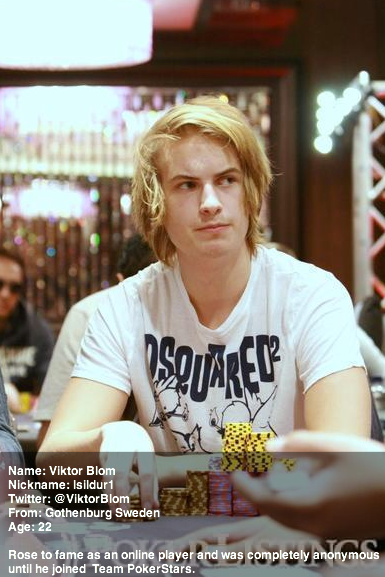![]()
If you've ever been in the market for a poker table, you're well aware the cost for even a basic set-up can run you $1,500+.
For something customized to your home/space or something truly show-stopping, you're looking at twice that or more.
It doesn't have to be that way though.
Guest blogger Jeff Kuronen has put together exclusively for PokerListings.com a full step-by-step guide to building your own poker table including images for every step and detailed CAD plans.
We think it's the perfect Do-It-Yourself solution to building a great poker table for under $300 - and in a reasonable amount of time.
Once you're done, you're all set to host the weekly card game you've always wanted to.
For tips on running the perfect home game, check our complete 14-part guide here.
By Jeff Kuronen
After constantly burning through cheap playing cards while playing poker with my friends I decided to finally invest in some plastic cards.
While scouring the internet for new cards I came across a great local site selling poker supplies.
They sell everything from cards to poker tables and building supplies, and it didn’t take long for my search to turn from cards to tables.
I quickly found out that a higher quality table would cost $1,500 or more.
These tables, at 3.5’ x 8’, were never going to fit in my small basement and I couldn’t justify spending that much.
So I decided to build one myself. The final dimensions of this poker table are 4’ x 6’ and it seats eight people comfortably.
About 25 hours and $300 were spent building it.
What You’ll Need:
Tools:
Jigsaw
Drill
3-5/8” Hole Saw (You can substitute this with a Dremel and a hole jig as a cheaper option)
4” Hole Saw (optional)
Hole Saw Drill Bit
Belt Sander or Palm Sander
Needle-Nose Pliers
Level for tracing lines
Pencils
Exacto Knife
Screw Driver
Heavy Duty Stapler
Home Depot:
(2) 4’x8’x 5/8” Sheets of plywood
Wood Screws
Wood Glue
(8) ¼”-20 T-Nuts
(8) ¼”-20 x 2” Lg. Machine Bolts
(8) ¼” Washers
Wood Stain
Fold-away legs
Pack of 1000 Staples
Straight Poker Supplies (www.StraightPokerSupplies.com)
(8) Jumbo Cup Holders
Copag Elite Playing Cards (optional – highly recommended)
Your Auto Trim (www.YourAutoTrim.com)
(3 yds) Whisper Vinyl
(3 yds) Poker Speed Cloth
Foam By Mail (www.FoamByMail.com)
(6 Ft) 2Lb Charcoal Volara Foam, ¼” x 60”
(1 Sheet) Lux Regular Foam, 82”x76”x1”
Build It
First, I traced out all the cut lines on both sheets of plywood.
After all my cut lines were laid out, I created a jig out of some scrap wood to guide my jigsaw in a perfect circle through the round cuts.
![DIYpokertable2]()
![DIYpokertable3]()
![DIYpokertable4]()
This process went horribly. Do NOT attempt the same thing.
After messing around with it for about an hour I was forced to admit defeat.
I ended up going really slowly with the jigsaw by hand and then sanding the edges smooth with a belt sander. A lot of imperfections will be hidden by the thick foam layer so it doesn’t have to be perfect.
Here’s a picture of the first few finished plywood pieces. These three pieces were all cut from a single plywood sheet.
![DIYpokertable9]()
The next step is gluing and screwing all the rail pieces together, making sure to avoid putting screws in spots where the future cup holders will go.
Screw from the bottom surface of the rail - the top surface should be as consistent and smooth as possible. Use wood filler if there are any holes from knots.
There are three layers of plywood in this design to give the rail extra height.
The first two assembled layers are shown here upside down – the top surface should be the single plywood piece.
![DIYpokertable12]()
Here’s the bottom view with the third, thinner layer attached.
The bottom layer is used to position the rail on the playing surface.
![DIYpokertable13]()
Next, the two oval plywood sheets are glued and screwed together and the fold-out legs are added.
If you want to stain the underside of the table, you should do it before attaching the legs. I didn’t stain mine because most people won’t see the bottom.
If you want to be a bit fancier install wooden legs instead. I personally needed the portability and this finished table weighs roughly 80lbs.
Here’s a quick look at the rough assembly:
![DIYPokerTable13 1]()
Clamp the rough assembly together to drill the holes for the T-nuts. This is done so that the rail can be removed for cleaning or in case something needs to be replaced (potentially the poker speed cloth).
Use a hammer to drive the T-nuts into the rail surface. This needs to be flush; otherwise you may have bumps under your rail.
![DIYpokertable13 2]()
Once the T-nuts are installed, fasten the assembled rail to the playing surface using the eight machine bolts coupled with the washers.
Drill the 3-5/8” holes for the cup holders while the table is fastened in this assembly.
Here’s a view from the bottom with the holes cut out:
![DIYpokertable15]()
Now the easy part is finished and it’s time to add foam and upholster the rail.
Remove the rail assembly from the table.
Lay the 1” foam on the ground, spray the top of the rail with spray adhesive and set the rail on the foam making sure to leave enough room so that you can wrap the foam around the rail.
Leave it like this for an hour with a few heavy objects on top. Make some rough cuts in the foam to make it workable.
Use the spray adhesive again on the sides of the rail and wrap it like shown. You may want to clamp the straight sides using a scrap piece of wood to hold it while it dries.
![DIYpokertable17]()
Do the same for the outside and then trim the excess foam.
You may have to re-apply spray adhesive more than once because it may peel off the rail in a few places.
![DIYpokertable18]()
Cut out the foam where the cup holders are going to be placed. Use a sharp knife.
Next up is the vinyl. Start by stapling one straight edge.
You’re going to need a lot of staples for this step; probably around 400-500.
Your hands may hurt for a few days afterwards from all the stapling but it is well worth the effort.
![DIYpokertable19]()
You can see that the vinyl is not long enough to go to the other side in the picture above.
This may seem to be a problem at first but you will need to stretch the vinyl with all your strength to get it all the way around the other side.
You may want a friend to help you with that to make it easier.
After you staple the straight edges you need to staple the round edges. Start stapling at the middle of the curve.
Make sure you stretch the vinyl to make it as tight as you can. Each new staple should be placed in the middle of the largest unstapled section until you feel as if you have it all secured.
This will most likely require staples to be very close to each other. This is very time consuming and you will want some pliers and a screwdriver to remove staples when sections don’t look right.
Don’t be discouraged here. Take your time with this because this is the most important step to make your table look great.
The vinyl will inevitably bunch up a little here but most should be hidden underneath the table.
![DIYpokertable20]()
The next step is to cut the centre of the vinyl like is shown in the picture below.
Don’t cut too close to the edges at first.
You can always cut more if needed as you test out this process.
![DIYpokertable21]()
Start stapling the straight section first and then work on the curved parts next.
Remember to always pull very hard when stapling.
Like before, on the curved section, each staple should be placed in the middle of the largest unstapled section until you feel as if you have it all secured.
![DIYpokertable22]()
Now it’s time for the most terrifying part of the job - cutting the holes for the cup holders.
![DIYpokertable22 1]()
Be careful. Cut an “X” shape in the middle of the holes.
Start small as you can always make the cuts larger later. Test out the holes using the cup holders.
If it goes in snugly then you’ve done it right.
![DIYpokertable22 2]()
Although it’s not shown here and is an optional step, there are thin wood rings that were cut using the 3-5/8” and 4” hole saws assembled together on the hole saw drill bit.
This wood ring helps support the cup holder and keep it level when a heavy drink is placed in it.
Put the wood rings into the rail under the vinyl before putting the cup holders in place. They should slip into the “X” cuts easily.
![DIYpokertable23]()
The hardest part is finished! It’s all easy from here on out.
On to the playing surface. Spray the table top with the adhesive and centre the ¼” foam.
You definitely want this foam – don’t skimp here as it adds some give in your table surface that will make playing more comfortable.
Once the foam is attached, cut the excess material off.
![DIYpokertable24]()
Next you need to staple the speed cloth over the table. Center the cloth over the table.
Staple the edges and the cup holder cutouts to secure the cloth.
![DIYpokertable25]()
Trim the excess material around the edges and within the cup holder cutouts.
![DIYpokertable26]()
Attach the rail to the playing surface using the eight machine bolts coupled with the washers from the bottom of the rail and you are done.
It’s time to have a game and a few drinks.
![DIYpokertable27]()
Complete CAD Blueprints for the DIY Poker Table
![DIYpokerTableCAD1]()
![DIYpokertableCAD2]()
![DIYpokertableCAD3]()
![DIYpokertableCAD4]()
![DIYpokertableCAD5]()
Click here for the full-size PDF of the CAD plans.
Visit
www.pokerlistings.com









































































